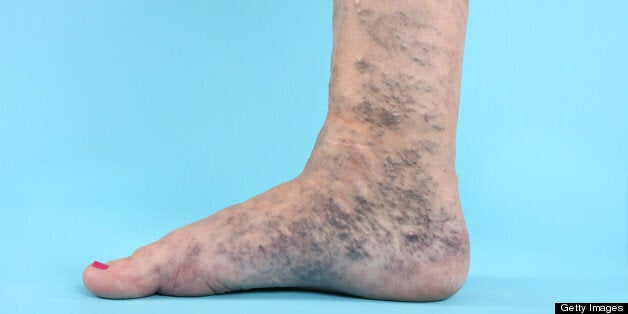
Varicose veins and "hidden varicose veins" (medically called chronic venous incompetence) affect an awful lot of people. Research suggests 15 to 20% of the adult population suffer with visible varicose veins and around the same number suffer with hidden varicose veins.
Research also suggests that even if you could magically cure everybody suffering with the condition today, there are still between 1.5% and 4.5% of the population developing new varicose veins each year, having had normal veins in the legs the year before.
So how does the NHS and private health insurance companies cope with this huge number of patients needing treatment?
Simply, they try to avoid it.
For many years people have erroneously been told that varicose veins are "only cosmetic" and do not bear any serious health implications. This makes many people suffering from venous disease too embarrassed to ask for help and for those that do, they are refused funded treatment to solve their problem.
Patients are often instructed to wear support stockings or compression stockings for 3 to 6 months to see if this "cures the problem" before a referral or funding is even considered.
Thank goodness for the new guidelines released today by NICE (the National Institute for Health and Care Excellence) about varicose veins.
The guidelines, which have been written with reference to published research, make perfect sense to those of us active in the venous world. Unfortunately, they do blow a hole in the way patients have previously been treated both by the NHS and private medical insurance companies.
Usually, to receive treatment, patients have to have a complication of varicose veins such as clots in the legs (superficial thrombophlebitis), skin damage or leg ulcers. The NICE guidelines have confirmed that all patients with varicose veins and any symptoms they have due to those veins will have a similar improvement in their quality of life as those patients with swollen ankles or skin damage due to their varicose veins. As such, from now on, the NICE guidelines support the referral of any patient with varicose veins and symptoms of varicose veins to a proper vein unit for investigation with a duplex ultrasound scan and endovenous treatment.
Furthermore, the NICE committee has looked for evidence to support the use of support stockings or compression stockings to "treat" varicose veins - and not surprisingly has found none (see my previous article.) As such, the new guidelines do not support the use of support or compression stockings for treatment or to replace treatment, but only for use in those patients unable to have their veins treated by the new endovenous techniques. There are only very few patients with a very severe problems who fall into this category.
So what do the new NICE guidelines mean for patients?
This is excellent news for patients with varicose veins and problems associated with "hidden varicose veins". All patients should now be referred to a proper unit that specialises in endovenous surgery and have experts in ultrasound scanning, as well as dedicated doctors who are able to perform the procedures. The new guidelines mean that there should be no delay in getting proper treatment by having to wear support stockings or compression stockings for a period of time before such a referral.
The only fly in the ointment of course is how the NHS or private medical insurers are going to comply with the NICE guidelines. The huge number of patients needing referral for treatment added to those who have been told they do not need treatment, or who have been instructed to wear support stockings before they can apply for their treatment to be funded, will all now be able to rightfully seek endovenous surgical treatments.
Judging by the current news reports about NHS finances, it is unlikely that the NHS will be able to fund all of the patients requiring venous surgery and hence will not be able to comply with the NICE guidelines. Similarly, it is highly unlikely that the private medical insurers will be able to cope with the financial demands that will be needed for this group of patients. I suspect that both will avoid the problem by excluding patients with varicose veins - leaving treatment to be funded by patients themselves.